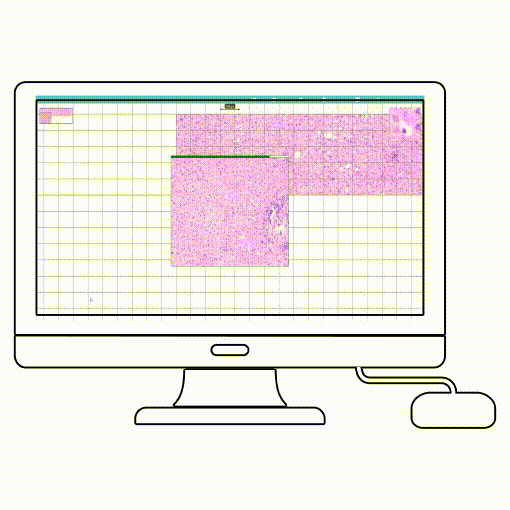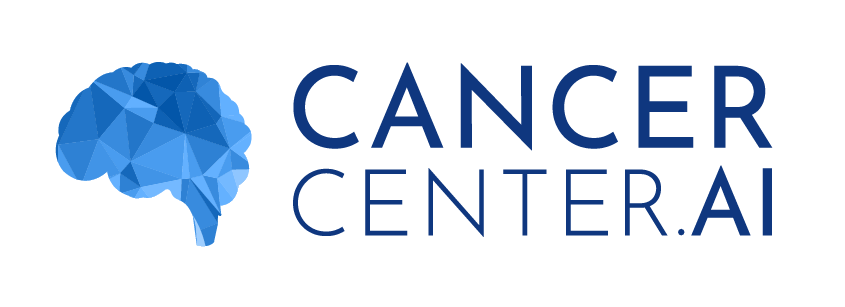Your Digital center for Cancer Diagnosis
Web-based platform for Digital Pathology & Radiology

How to speed-up your routine tasks?
In pathology
module for pathologists
Zoom, view, annotate and share pathology images by web/browser. Apply AI algorithms that can be manually corrected. Use built-in global standards (ICCR, WHO, ICD-O codes).
In laboratory
Laboratory Information System
Process, store, and manage data. Coordinate laboratory workflows, from patient check-in and order entry to specimen processing, result entry, and report distribution.
AI algorithms
available from platform
Use currently available algorithms (Gleason score, Metastasis, ki67) or ask us to add your favorite one. We aim to create a perfect base of newest technologies for cancer detection in one place.
In radiology
module for radiologists
Analyze radiology images (MRI, CT, USG, and others DICOM format) imported from any device. Use AI algorithms to fasten radiological analysis and correct results manually.
How can you digitize laboratory slides without an expensive scanner?

We have the perfect solution for you
PathoCam revolutionizes the way you digitize laboratory slides without breaking the bank. Using just your existing microscope and a camera, PathoCam transforms your setup into a powerful digitization tool. This cost-effective approach allows you to create high-resolution digital images of your slides with ease. No need for expensive specialized equipment – PathoCam works with what you already have. Plus, all your digitized slides are securely stored in our cloud-based platform, ensuring easy access and collaboration.
What benefits will you gain with CancerCenter.ai?
- Enhanced Workflow Efficiency: The seamless web browser experience for image management allows doctors to analyze, annotate, and share pathology slides and radiology images more efficiently. This streamlined workflow can save time and reduce administrative burden.
- Improved Diagnostic Accuracy: The ability to view multiple scans in parallel and easily compare images can lead to more accurate diagnoses. The AI-assisted analysis tools can also support doctors in making more precise assessments.
- Flexible Working Conditions: The remote work capability enables doctors to access cases securely from anywhere, providing greater flexibility in their practice and potentially improving work-life balance.
- Standardized Reporting: Integrated report templates ensure consistency and adherence to professional standards, which can improve the quality of diagnostic reports.
- Cost-Effective Digitization: The PathoCam feature allows for digital imaging without the need for expensive scanners, making digital pathology more accessible to smaller practices or facilities with budget constraints.
- Enhanced Collaboration: The platform’s sharing features facilitate easy and secure collaboration with colleagues, potentially leading to better diagnostic outcomes through shared expertise.
- Integration with Existing Systems: The ability to integrate with various scanners, PACS, and LIMS systems means medical facilities can enhance their digital capabilities without overhauling their entire infrastructure.
- Faster Diagnoses: The streamlined workflow and collaborative features can lead to quicker diagnoses, potentially reducing waiting times for patients.
- More Accurate Diagnoses: The platform’s advanced imaging and analysis tools, combined with the ability for doctors to easily consult with colleagues, can result in more accurate diagnoses for patients.
- Improved Access to Expertise: The remote consultation capabilities mean patients can potentially benefit from expert opinions without the need for travel, especially beneficial for those in rural or underserved areas.
- Enhanced Continuity of Care: The web-based nature of the platform facilitates seamless sharing of diagnostic information among various healthcare providers, potentially leading to better coordinated care for patients.
- Increased Safety: The robust security measures protect patient data, ensuring privacy and confidentiality in the diagnostic process.
- Potential for Earlier Treatment: Faster and more accurate diagnoses can lead to earlier initiation of treatment, which can be crucial in cancer care.
